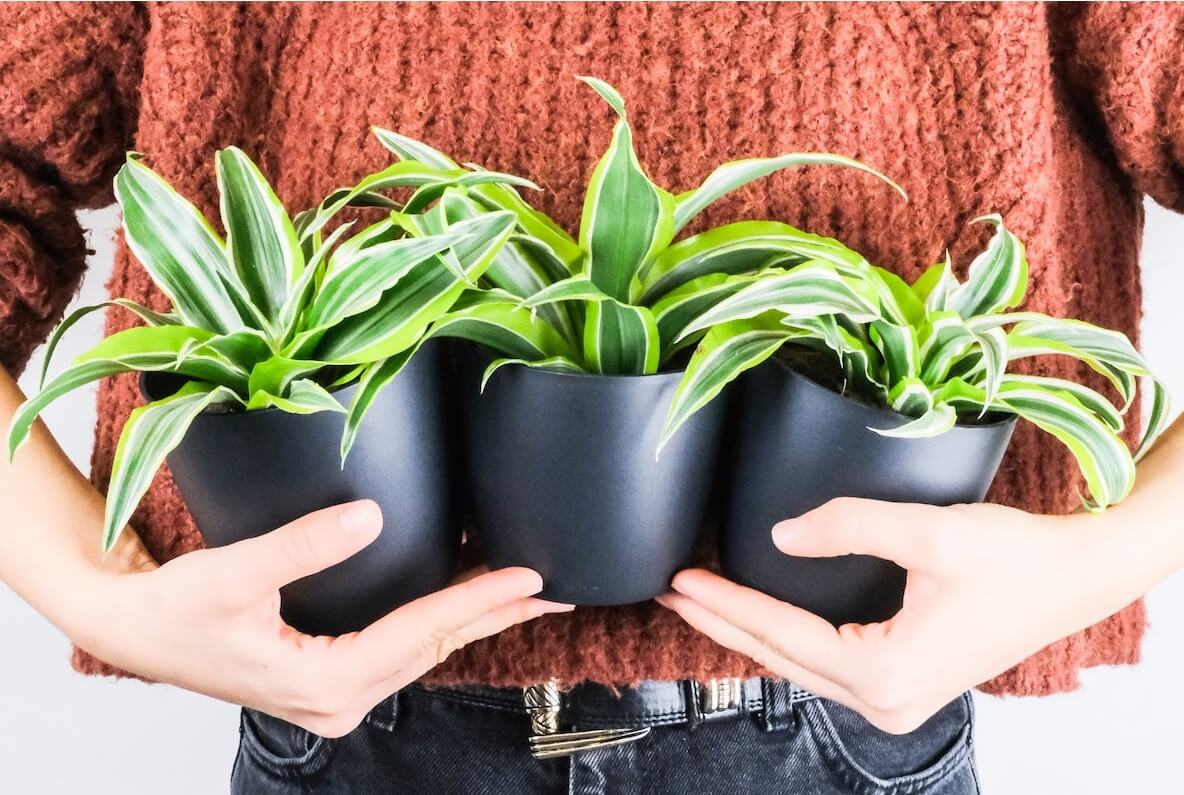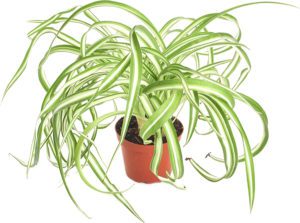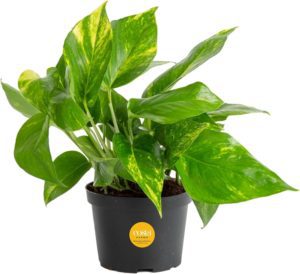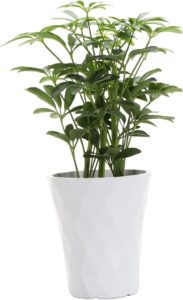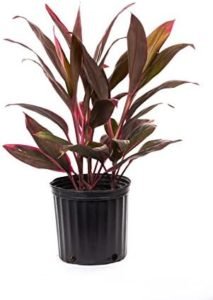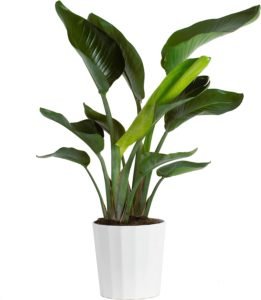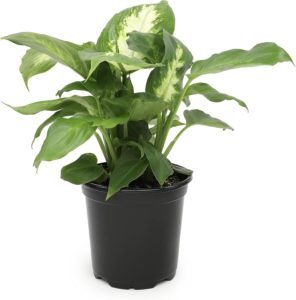If providing good drainage for your plants goes into the category of plant care things-to-do you consider “optional”, I have some good news and some bad news for you.
Bad news first? Like, 90% of all plants need some kind of drainage.
The good news is that there are some exceptions. Yes, that’s right: There are some plants that don’t need drainage!
We’ve picked 11 of our favorites!
Do indoor plants need drainage?
We’ll say it again; most indoor plants do need drainage elements in their soil and pot, just like their outdoor relatives (stay tuned for plants that don’t need drainage).
When you’re growing plants anywhere, it’s important to remember that they need moist soil, not wet soil. Wet soil inhibits plant growth, and will ultimately kill it. This is why drainage is so crucial for house plants.
They’re often kept in indirect light rather than direct sunlight, so excess water doesn’t have the ability to evaporate the way it would outdoors.
One of the most important elements of good drainage is your plant’s container. Some pots have several holes around the bottom, while others have a single drainage hole, where excess water drains through after watering.
Drainage holes in pots keep your plant’s roots healthy, preventing them from being exposed to excess water. When water builds up at the bottom of your plant’s pot, there are a number of not-so-desirable things that can happen.
- Your plant can drown. Too much water is just as bad as too little water. Even water-loving tropical plants have their limits. Too much water prevents adequate oxygenation and movement of nutrients.
- Root rot. Root rot is one of the worst things that can happen to a plant! It’s a smelly, sad process that involves your plant’s roots decaying in waterlogged darkness at the bottom of a pot. Unchecked, root rot will kill your indoor plants (learn how to fix root rot).
You can avoid mess and precise watering measurements by choosing a plant that doesn’t require much drainage.
11 plants that don’t need drainage
You can avoid the headache of overwatering your favorite plants and opt for plants that don’t mind some excess water. Thankfully, there are quite a few plants that do well without drainage holes in their pots. These plants share two things in common:
- Environment. Plants that come from either a very wet environment or very dry environment tend to not need drainage. Plants that come from wet environments need more water than other plants, making them hardy. Plants from dry environments use very little water, and rarely need to be watered, thus eliminating the need for drainage holes.
- Root systems. When a plant has a root ball, rather than a deeper root system, you have to worry less about drainage as long as they’re potted correctly. This typically means setting a layer of gravel or rocks at the bottom of a pot, and placing well-draining soil on top.
Now, let’s talk about some specific plants that fit into these categories!
Spider plant (Chlorophytum comosum)
The spider plant is probably the best example of a plant that doesn’t need drainage. Spider plants are ideal indoor plants, characterized by their long fronds and incredibly fast growth. Spider plants come from tropical parts of Africa where they’re subjected to large amounts of water and indirect sunlight, and they’re champions of recovering from water damage! Spider plants make excellent plants for beginners and experts alike.
- Ideal climate: Warm, humid environments with indirect sunlight
- Water needs: Water once a week, or when the top 50% of the soil is dry
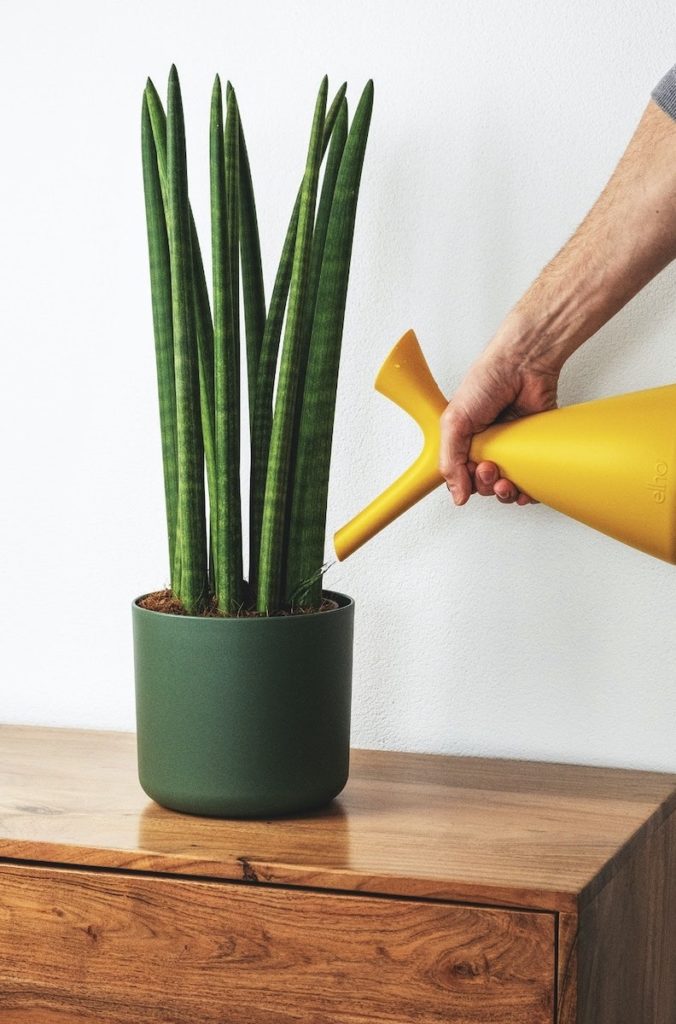
Snake plant (Dracaena trifasciata)
There are many varieties of Dracaena, and all of them are super resistant to wet conditions. The snake plant doesn’t require drainage thanks to both its root system and its ideal environment. They’re also tropical plants, meaning they’re used to being showered in rain and hanging out in steamy environments. Snake plants thrive indoors, and don’t mind a closed pot!
- Ideal climate: Warm, humid environments with indirect sunlight
- Water needs: Water once every two weeks, or when the soil is completely dry
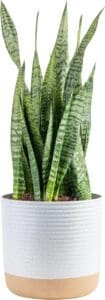
Pineapple plant (Ananas comosus)
Yes, the pineapple plant! Pineapple plants can happily be grown indoors without drainage holes. Although pineapple plants are tropical, they prefer direct sunlight to a shaded jungle-like environment. They have tough leaves that prevent them from drying out, and they don’t need a lot of water to thrive.
- Ideal climate: Warm, humid environments with direct sunlight
- Water needs: Water when top inch of soil has become completely dry
Pothos plants (Epipremnum aureum)
Also known as Devil’s Ivy, pothos plants are known to grow (over)abundantly in the wild. So yes, they’re resilient (just like Ivy) and don’t object to a bath every once in a while. Pothos have beautiful heart shaped leaves, grow aerial roots that attach to climbing surfaces, and get their nutrients from humidity. As such, they need to be misted when grown indoors.
- Ideal climate: Warm temperatures with very high humidity
- Water needs: Mist plants once a week during warmer months, and once every two weeks during colder months
Chinese evergreen (Aglaonema commutatum)
No needles in this evergreen variety! Aglaonema have beautiful, oblong leaves reminiscent of Calathea and come in a variety of colors. The Chinese evergreen grow in wet areas, where the soil is consistently saturated with water. The roots of this pretty plant are resistant to root rot and the foliage comes in shades of green to silver and red.
- Ideal climate: Warm, humid environment with indirect sunlight
- Water needs: Water once a week, or when soil becomes dry
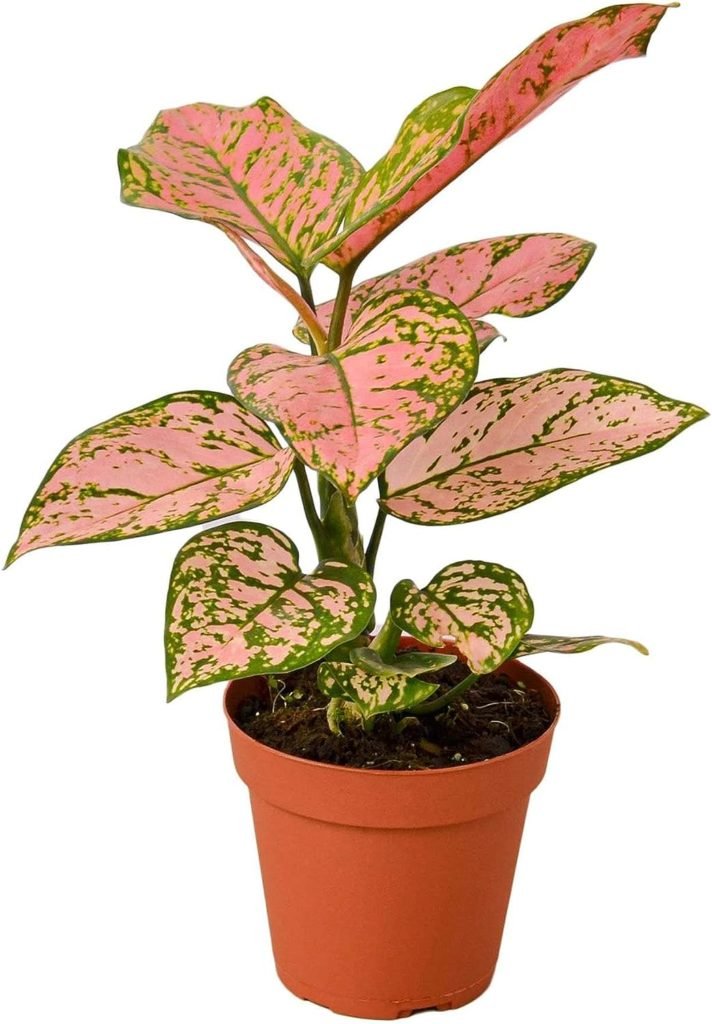
Schefflera plant (Schefflera arboricola)
You probably know Schefflera plants by their common name; umbrella trees. These are another excellent candidate for any pot you have on hand (that doesn’t have drainage holes.) In the wild, these are found in tropical environments in direct sun. When grown outdoors, they can reach heights of 60 feet or more! Indoors, you can train umbrella trees up to 10 feet with a proper sized pot.
- Ideal climate: Warm, humid environment with direct sunlight, but can be grown in shaded areas, too
- Water needs: Water once a week, or when soil becomes dry
Cordyline plant (Cordyline fruticosa)
Cordyline plants are recognizable by their Fuschia to maroon sprays of foliage. Native to Hawaii and often called the Hawaiian Ti’ plant, Cordyline may look like a diva but isn’t as demanding! No drainage holes are necessary for your Ti’ plant pots but do find coarse, well-draining soil to keep this plant happy. Ti’ plants actually love having wet soil, so all you need to do is water and let ‘em be.
- Ideal climate: Warm, humid environment with indirect sunlight and well draining soil
- Water needs: Keep soil moist, without letting it dry completely
Rough horsetail (Equisetum hyemale)
You might have seen horsetail growing along riverbanks or in other wetland areas. It looks a bit like bamboo, but it’s actually a type of fern, and yes – Equisetium loooove boggy-type environments. These woody-stemmed ferns can handle just about as much water as you can give them! Grow them entirely in water (we recommend using LECA), or pick a pot without drainage holes.
- Ideal climate: High humidity, in any temperature range, with indirect sun
- Water needs: Water once a week, never letting the soil dry completely
Succulents (assorted species)
When it comes to plants well-suited to domestic climates, you can’t go wrong with succulents. Most types of succulents have fleshy leaves that allow them to retain moisture in times of drought (aka you going on holiday), and they’re super popular for this reason! You can find flowering succulents, like the climbing hoya heart above – not to mention an endless variety of colors, shapes, textures, and foliage formations. Mini-succulents and cuttings are popular as collectibles, and larger succulents infuse any home space with personality. If you have trouble keeping plants alive, consider getting succulents, or anything else in the cacti family. They require next to no drainage and do well indoors (just don’t over-water them).
- Ideal climate: Rocky soil, or a container filled with well draining soil, direct sun, low humidity
- Water needs: Minimal watering every 14 to 21 days, with no standing water
Birds of paradise (Strelitzia reginae)
If you’re looking for a flowering plant, then you may want to consider birds of paradise (yes, it’s really a plant! No bird seed needed). Birds of paradise originate in South and Central Africa and boast dark green leaves with orange, blue, and pink flowers resembling a bird’s head. They require very little soil to grow due to their shallow, strong root system. If you place this regal plant in a deep pot without drainage holes, its roots will stay kiddy-pool depth and safe from root rot.
- Ideal climate: Warm, humid environments with indirect light
- Water needs: Water once a week, allowing the soil to dry between waterings
Dumbcane plant (Dieffenbachia seguine)
The dumbcane plant is our last not-so-picky recommendation for a plant that thrives without drainage holes. Dumbcane thrives in indirect light conditions and high humidity, making it easy to keep the dumb cane plant alive in just about any indoor environment, including offices and rooms with little sunlight. They come in a range of colors, from emerald green to citron yellow and pearly white. If you’re looking for a plant that requires little to no maintenance, and yup – zero drainage holes required – this is the perfect pick for you.
- Ideal climate: Warm, with high humidity, does well in little to no light, as well
- Water needs: Soil should be kept moist, watering at least once a week
As you can see, there are plenty of plants that don’t need drainage holes! The advantage of picking plants that don’t mind sitting in a bit of water is that they’re typically low-maintenance in more ways than one.
More about watering plants
- How Often To Water Dracaena (Including Snake Plants)
- How to Use Leca for Plants: Step-by-Step Guide with Pictures
- How To Save An Overwatered Snake Plant
- How Often To Water Pothos Plants (And When To Cut Back)
- How Often To Water Monstera Plants
- 11 Plants That Don’t Need Drainage And How To Care For Them
- Save Your Overwatered Monstera In 4 Steps (And How Not To Do It Again)
- Tags:
- drainage

